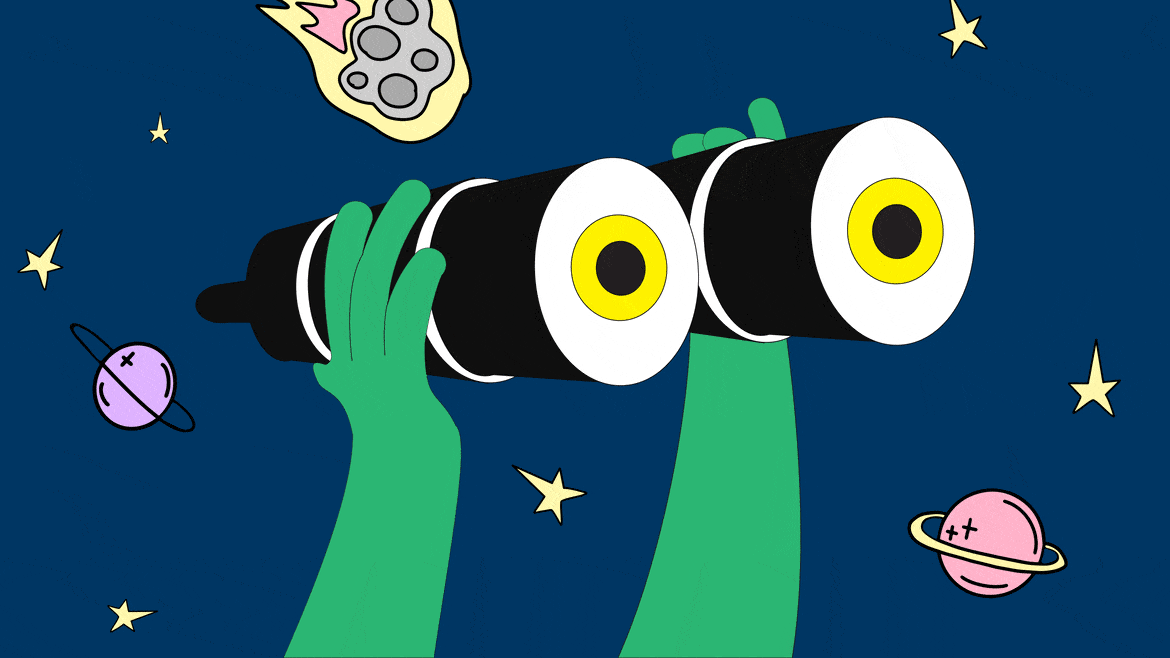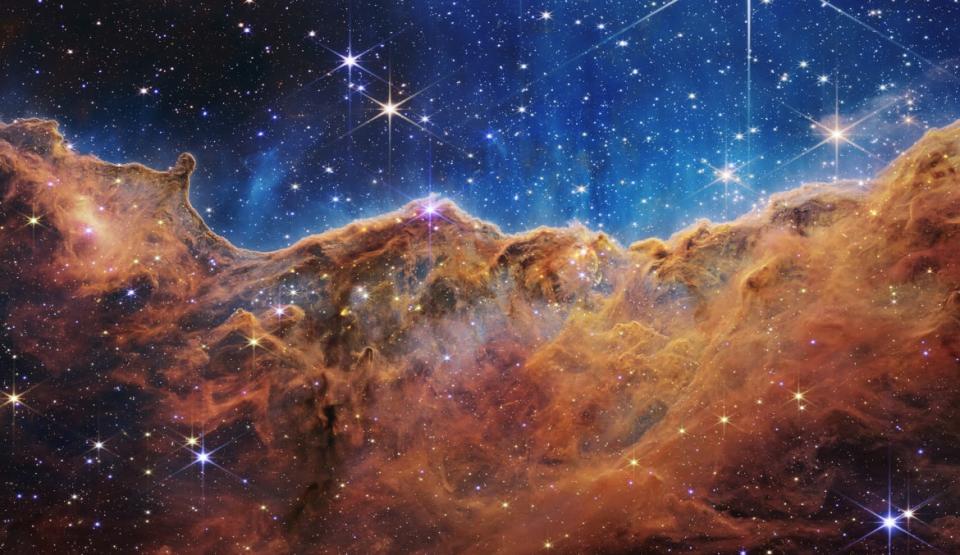Aliens Could Discover Earth Using This Age-Old Technique

For nearly 60 years, scientists have been pointing radio receivers and telescopes into the sky, searching for a sign that we’re not alone in the universe.
So far, no luck. But the search for extraterrestrial intelligence, or SETI, cuts both ways. While we’re looking for evidence of alien civilizations, alien civilizations could be looking for evidence of us. To get a handle on just how visible we might be to aliens, a team of astronomers put themselves in the aliens’ shoes—and imagined how they might look for us, and how good their odds are of actually finding us.
Bad news if you’re in favor of first contact though. Earth, it turns out, is actually pretty well hidden from potential alien astronomers. Of course, that’s good news if you think E.T. might be hostile.
The team of astronomers from Japan, Thailand, the United Kingdom and France took a common Earth-based space-survey method called “microlensing,” and flipped it. Their study has been peer-reviewed and accepted for publication in Monthly Notices of the Royal Astronomical Society.
Why There’s a Chance We Heard From Aliens Back in 1977
“In theory, a long-range detection-method like microlensing could be employed by technological civilizations to detect the Earth across galactic distance scales,” the study’s authors wrote.
Microlensing is a way of detecting extremely distant planets—as in, tens of thousands of light-years away. Astronomers peering through powerful telescopes look for stars that suddenly get a lot brighter.
One reason a star might get abruptly brighter is that a planet, itself too small to be visible at that distance, is passing between the star and Earth. The planet’s atmosphere acts as a lens, intensifying the star’s light from the observer’s point of view.
NASA’s $10-billion James Webb Space Telescope takes advantage of a similar principle to observe faraway galaxies—except in the case of JWST, it’s gravity that does the lensing, not a planet’s atmosphere. The first incredible images of lensing galaxies from the new space telescope dropped this week.

The Carina Nebula, as imaged by the James Webb Space Telescope.
So far, scientists have discovered 130 planets by way of microlensing, adding them to the list of planets SETI practitioners can scan for signs of alien life such as radio broadcasts, laser signals, or industrial pollutants. Assuming aliens exist—and to be clear, many astronomers assume they do, somewhere—what are their chances of discovering Earth using the same microlensing technique?
Not good. The authors assumed that an alien astronomer would be on a planet orbiting a star somewhere in our corner of the Milky Way galaxy, gazing toward another star—our own or one farther away—at the moment Earth passes between that star and the astronomer. They also assumed the aliens would have roughly the same technology we have. The same kinds of telescopes. The same kinds of computers for analyzing astronomical data.
But that’s not a safe assumption, Supachai Awiphan, a researcher at the National Astronomical Research Institute of Thailand and co-author of the study, told The Daily Beast. “Other civilizations might have more advanced technology and techniques to detect the Earth,” he said. However, since we can’t make calculations for technology we don’t possess, we’re stuck projecting our own technological constraints onto potential alien civilizations.
The prerequisite geography for the observations, as well as the tech constraints the authors bake into their analysis, limits the number of possible vantage points from where some alien might glimpse Earth. They calculated a “total Earth discovery rate” of around 15 per year. In other words, there are just 15 opportunities every year for an alien astronomer to notice Earth using the microlensing technique.

Supachai Awiphan
But that doesn’t mean E.T. is actually looking every time Earth lenses—assuming, of course, E.T. even exists and wants to find us. The study is a splash of cold water on the idea that aliens might find us before we find them.
Our planet, it turns out, is “well hidden,” the study’s authors wrote.
Douglas Vakoch, who heads the METI International research organization—dedicated to communicating with aliens—in San Francisco, told The Daily Beast he isn’t surprised. The success of any microlensing-based survey depends on a “fluke,” he said. “When the stars align just right—literally—Earth suddenly pops into view for any alien astronomers looking our direction at exactly the right time.”
Of course, it’s possible aliens could hear us without seeing us. After all, our own SETI efforts are mostly auditory. Scientists point huge radio receivers into space and listen for signals that sound like they might have come from intelligent beings.
But radio SETI can be frustrating. We could hear an alien broadcast and not even realize it. A few SETI practitioners suspect that exact thing may have happened way back in 1977. It’s possible we made first contact and didn’t even notice.
Visually detecting a habitable planet via microlensing, then following up with a closer survey looking for clear evidence of intelligent life, could be a less ambiguous way of confirming we’re not alone. That should also apply to any aliens out there searching for us. But don’t hold your breath. As the microlensing study explains, it could be a long, long time before alien astronomers, peering through their telescopes, get lucky and notice Earth.
It’s possible that’s actually good news. There’s an assumption in SETI that meeting aliens is a good thing. That our civilization, and theirs, can only benefit from an introduction—but what if that assumption is wrong? What if E.T. turns out to be hostile? “It is not necessarily a good thing to encounter aliens,” Annie Robin, an astrophysics researcher at the Institut Utinam in France and co-author of the study, told The Daily Beast. In that case, we should count ourselves lucky that our planet is so hard to find.
David Specht, an astronomy researcher at the University of Manchester and co-author of the study, told The Daily Beast he’s optimistic. “I’d like to hope that aliens, for all their own problems, would see us as something intriguing that’s worth preserving and studying instead of paving over us with an interstellar highway,” he said.
If We Can Find Hidden Planets, We Might Find Alien Life
Vakoch for one said he’s unconcerned, either way. Microlensing is a way of detecting planets from tens of thousands of light-years. That distance protects us. “If an extraterrestrial civilization needs microlensing to detect Earth, they’re so far away that it’s hard to imagine what would be so valuable that would make them travel across the galaxy to get here,” Vakoch said.
Then again, maybe Vakoch is wrong. Let’s say some hostile alien civilization discovers Earth. Let’s say that civilization immediately launches an invasion force.
But don’t sweat it. We’ve got hundreds of thousands of years before they get here. Plenty of time for us to wipe ourselves out—and render the alien invasion moot.
Got a tip? Send it to The Daily Beast here
Get the Daily Beast's biggest scoops and scandals delivered right to your inbox. Sign up now.
Stay informed and gain unlimited access to the Daily Beast's unmatched reporting. Subscribe now.

 Yahoo News
Yahoo News 
